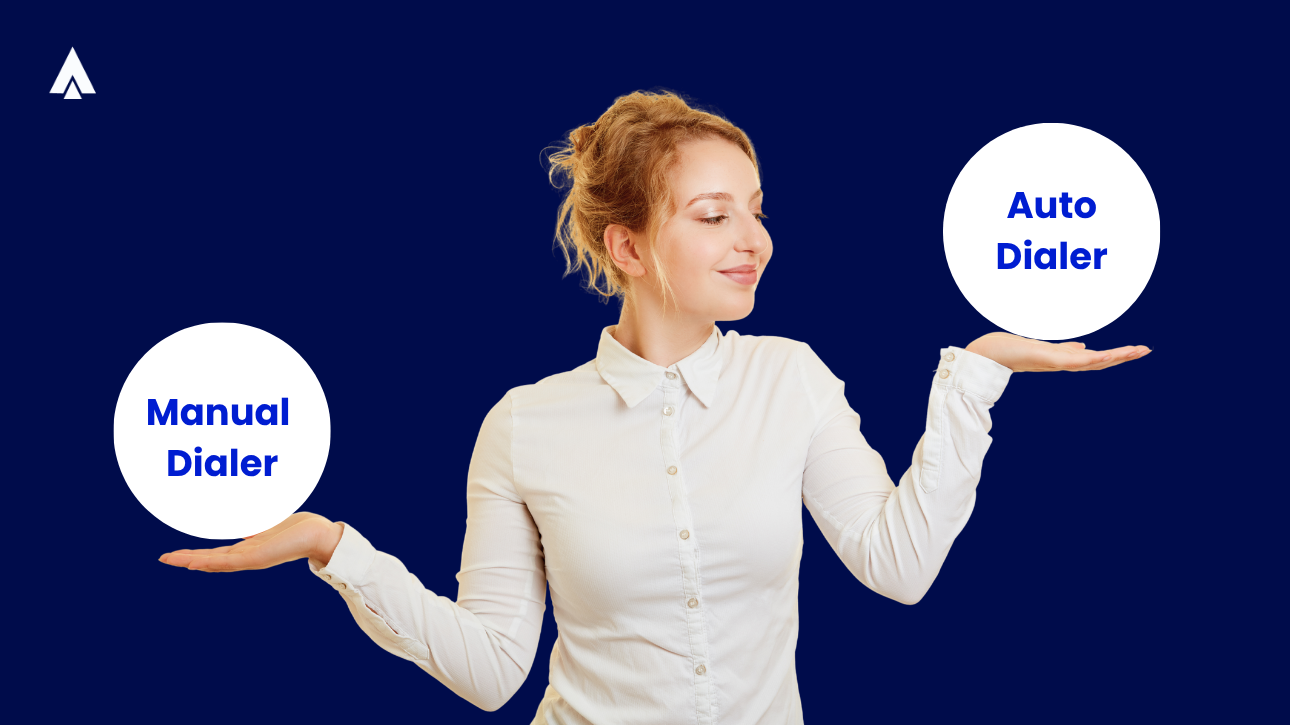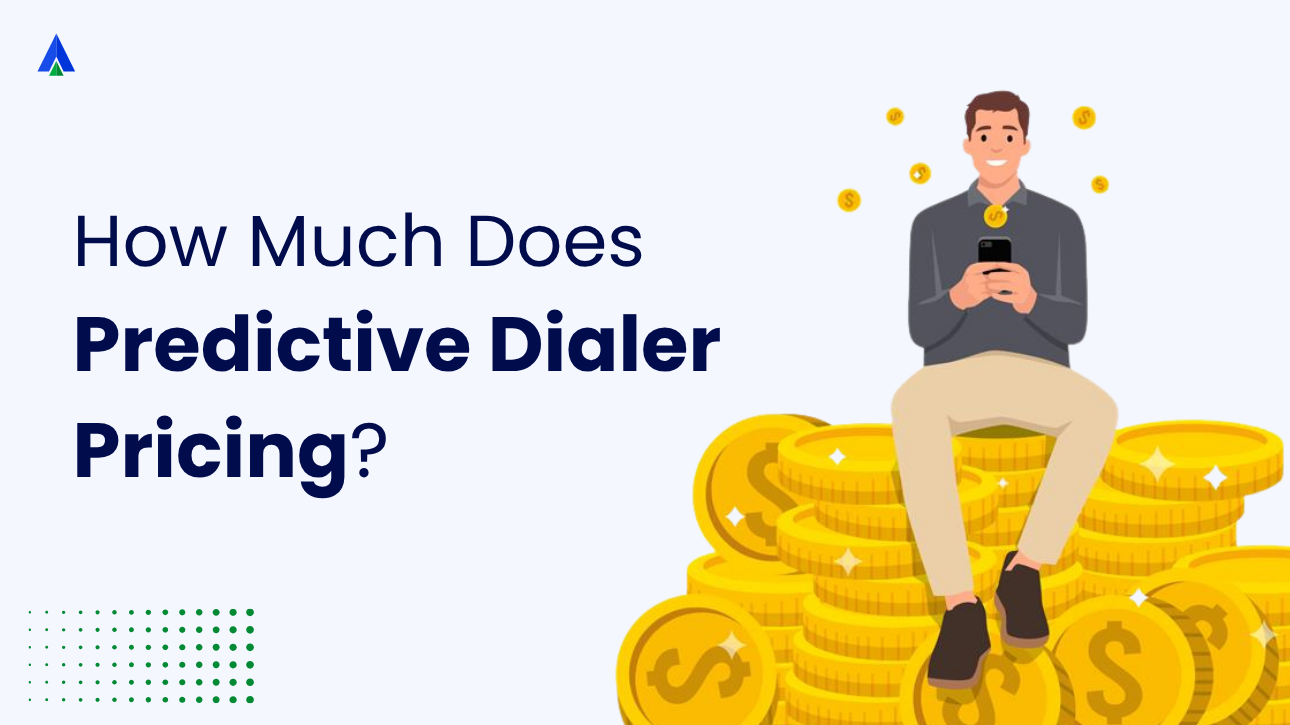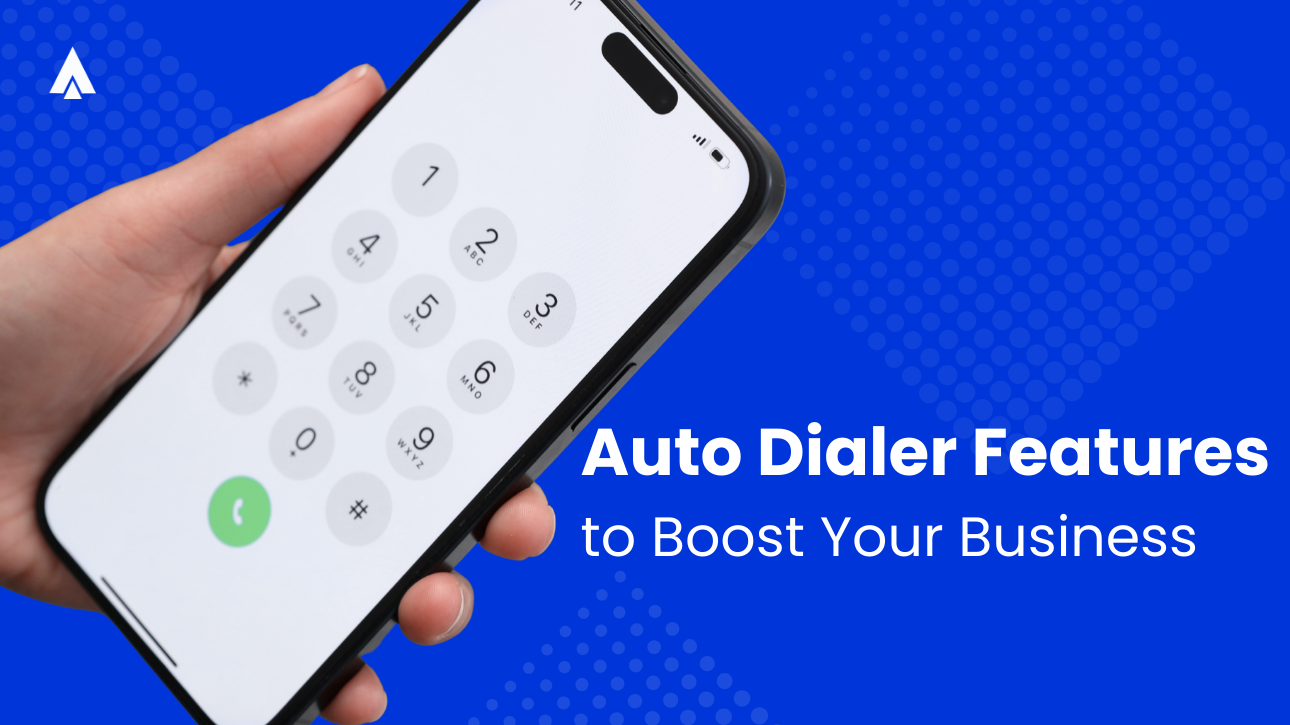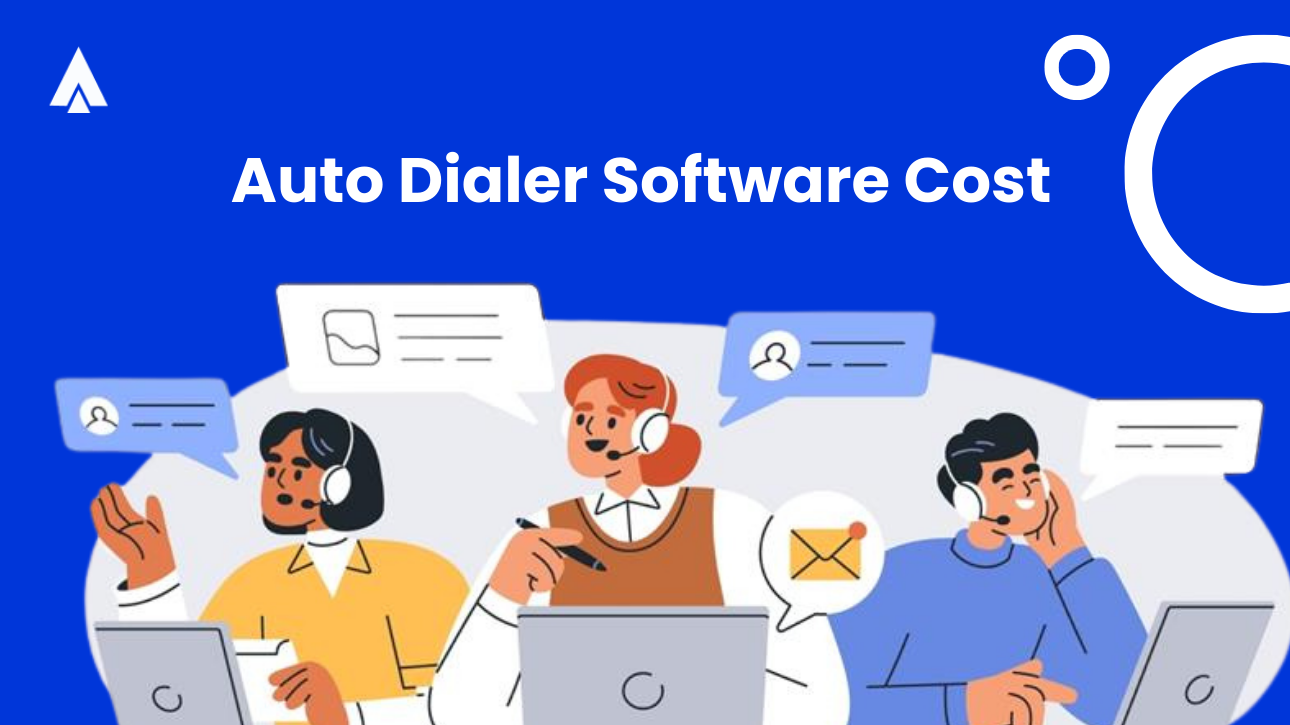If you are a part of any customer facing team, you know the drill: pick up the phone, punch in a number, wait for the ring, then repeat. It gets the job done, until your lead list grows manifold. After that, the targets ramp up, and your team starts falling behind because they’re still tied up manually dialing numbers.
There’s a faster, more efficient way to maximize outreach. It is auto dialing.
Auto dialer is not just a shiny new tool in your tech stack. It can be a fundamental shift in how you do outbound sales. That is why the auto dialer market is all set to reach a valuation of $1.22 billion by 2034.
Let’s understand more about auto dialer vs manual dialer and determine how the former is a humongous development on the latter.
What Is a Manual Dialer?
The manual dialers are the most basic form of contact center dialer. They require agents to dial telephone numbers manually by referring to the client list number-by-number.
Your team even has to wait to see if the call is answered by the customer. You cannot use manual dialers to manage large outbound marketing campaigns and handle a large number of calls. At present, manual dialers are being used by businesses for simple outbound call campaigns.
When Should You Use a Manual Dialer?
Here’s where you can use manual dialers:
- When Managing a Small Number of Calls
For situations involving a limited call list, such as follow-ups with a few clients or one-on-one outreach.
- When Compliance and Regulatory Concerns Are High
In industries or regions with strict telemarketing or auto-dialing laws, using a manual dialer reduces the risk of accidental violations. Since each call is individually made and controlled by a person, it makes it easier to adhere to rules.
What Is an Auto Dialer?
An auto dialer is outbound calling software that enables agents to automatically call large volumes of numbers quickly. When any customer answers the call, they’re either connected to a live agent or hear a pre-recorded message.
Auto dialer software streamline call handling, improve documentation, and enhance customer experience. Reducing cold transfers and idle time through automation helps boost productivity and drive better ROI.
When Should You Use an Auto Dialer?
Auto dialers can prove to be useful in multiple areas of your operation. Here are a couple of them:
- For High-Volume Outbound Calling Campaigns
Auto dialers are ideal when you need to reach thousands of contacts quickly. They can help you simplify big campaigns such as telemarketing, debt collection, or appointment reminders.
- When Speed and Efficiency Are Priorities
If your goal is to minimize agent downtime and speed up dialing, auto dialers should be your first choice. They automate the dialing process, connecting agents only to answered calls and reducing idle time.
- For Consistent and Repetitive Messaging
Auto dialers work well when delivering uniform messages like surveys, notifications, or alerts. They ensure consistent communication without needing individual customization.
- When Compliance Features Are Required
Many auto dialers include built-in compliance tools, like do-not-call list management and call recording. They help you adhere to telemarketing laws and regulations.
- To Optimize Agent Workflow with Call Routing
Auto dialers can route calls intelligently based on agent skills, availability, or campaign priorities. This improves overall workflow and ensuring the right calls reach the right agents efficiently.
What Are the Types of Auto Dialers
Auto dialers come in various forms, each tailored to a specific need.
Here’s a quick overview of the main types:
1. Predictive Dialers
Predictive dialers use smart algorithms to dial multiple numbers at once, predicting agent availability based on factors like call duration and staffing. They are ideal for high-volume campaigns such as telemarketing, debt collection, or political outreach.
2. Progressive Dialers
Progressive dialers call the next number only when an agent is free. Unlike predictive systems, they dial one call at a time. This makes them ideal for scenarios that require a personal touch like follow-ups, appointment reminders, or customer surveys.
3. Preview Dialers
Preview dialers display customer information to agents before placing the call, allowing time to review details and prepare. They are perfect for B2B sales, account management, or any complex customer interactions where context matters.
4. Power Dialers
Power dialers continuously call one number after another without waiting for agent input. While similar to progressive dialers, they maintain a faster, more constant pace. This makes them more suited for sales and marketing teams needing to handle large call volumes efficiently.
Auto Dialer vs Manual Dialer: Key Differences
| Aspect | Auto Dialer | Manual Dialer |
| Definition | Software or device that automatically dials numbers from a list | Person manually dialing each number one by one |
| Speed | Much faster, can dial multiple numbers simultaneously | Slower, limited to one call at a time |
| Efficiency | High efficiency in reaching large volumes of contacts | Lower efficiency due to manual process |
| Error Rate | Lower human error, but can have technical issues | Higher human error potential in dialing wrong numbers |
| Cost | Higher initial investment due to software/hardware | Lower initial cost, no special tools needed |
| Personalization | Limited; often uses pre-recorded messages or scripts | Highly personalized, allows natural conversation |
| Use Case | Best for mass marketing, surveys, reminders | Best for detailed, personalized customer service |
| Control | Less immediate control over call timing and pacing | Full control over call timing and interaction |
| Compliance | Must comply with telemarketing regulations and auto dialer laws | Fewer automated compliance risks but still regulated |
| Human Interaction | Minimal to none during dialing phase, mostly automated | Direct human involvement throughout the call |
Auto Dialer vs Manual Dialer: Why Should You Choose the Former?
Now that you understand the difference between manual and auto dialers, let’s understand how automation can save your customer interactions from a sluggish death:
Dialing Mode Support
The manual dialers require agents to place outbound calls manually. Hence, the agents can control the outbound calls according to the precise needs of individual marketing campaigns.
But auto dialers these days support preview, progressive, and predictive dialing modes. The agents even have the option to switch from one dialing mode to another. The manager can choose the appropriate dialing mode according to the nature and needs of each marketing campaign.
Customer Information Access
While using a manual dialer, agents need to access customer information by scouring the computer screen or paper records frequently. They even need to put extra time and effort to decide to customer to be contacted and find his/her phone number.
But the auto dialers dial telephone numbers stored in a database or spreadsheet automatically and sequentially. The agents can see customer information directly on their computer screens while handling the answered calls. The auto dialers help call centers increase agent talk time, reduce agent idle time, and improve customer experience—the core benefits of auto dialer technology.
Call Volume
No modern call center can handle a large number of outbound calls or a surge in outbound calls using manual dialers. The agents cannot handle high volume outbound calls by dialing numbers manually.
The auto dialers help call centers to manage large-scale marketing campaigns and high volume outbound calls. The predictive dialers initiate outbound call by predicting when an agent will be free to handle the next call.
Likewise, the progressive dialers dial the next contact number as soon as an agent wraps up the current call. However, the call centers can also use preview dialers to make agents access updated customer information before handling the answered call. Many call centers leverage automatic dialers to reduce make more calls and reduce wait time between subsequent calls.
Agent Productivity
While using a manual dialer, the agents need to dial the number manually and wait to see if the call is being answered by a live person. The cloud hosted auto dialers use voice detection technologies to differentiate between answered calls and unproductive numbers.
They transfer the call to a live agent only when it is answered by a live person. Hence, the agents are required to handle only answered calls. The feature help call centers to boost agent productivity and handle surge in outgoing calls.
Curious how a BPO call center can reduce costs by using auto dialer instead of manual dialing? Learn more here
CRM Integration
Most businesses these days manage customer information efficiently using customer relationship management (CRM) solutions. The businesses lack any option to integrate manual dialers with their CRM systems.
Hence, the agents have to update customer information manually after wrapping up a call. The hosted auto dialers can be integrated seamlessly with a business’s existing CRM system. The integration enables the dialer to update customer information automatically.
Call Quality Assessment
The hosted predictive dialers, unlike manual dialers, allow managers to monitor and listen to live calls without disturbing the ongoing call. Hence, it becomes easier for the manager to evaluate agent performance and assess call quality. A modern auto dialer can sync with your CRM and automatically filter out busy or disconnected numbers—saving valuable agent time compared to manual dialing.
Some auto dialers even enable managers to retain customers using widely used techniques like call whispering and call barging. The managers can further make agent training programs more effective by embedding real-world interactions.
Marketing Campaign Management
Manual dialers do not provide any features to streamline and improve outbound call campaigns. But the new age auto dialers come with features to simplify monitoring and management of multiple marketing campaigns.
Some auto dialing solutions even initiate outbound calls at the perfect time by adjusting time zone for individual campaigns. The managers can monitor the performance of multiple marketing campaigns by generating real-time reports.
Wrapping Up
Auto dialers are no longer a luxury, they’re a necessity if you are aiming to maximize efficiency, boost agent productivity, and deliver seamless customer experiences.
At Acefone, we offer a powerful, cloud-based auto dialer solution built to simplify and supercharge your outbound calling efforts. With intelligent dialing modes, CRM integration, real-time analytics, and advanced call routing, our platform ensures that your team spends less time dialing and more time converting.
FAQ
The main difference lies in automation. Auto dialers automatically dial phone numbers from a list and often play pre-recorded messages or connect calls to agents. Manual dialers require a person to manually enter and dial each number, making the process slower and more labor-intensive.
Manual dialers require an agent or user to physically input or select phone numbers and dial them one by one using a phone or software interface. The caller manually controls the pacing and timing of calls, allowing for personalized interaction but limiting speed and volume.
Auto dialers significantly increase call efficiency by automatically dialing multiple numbers simultaneously and connecting answered calls to agents, reducing downtime. Manual dialers are slower, as agents must dial each number individually, resulting in longer call cycles and more idle time between calls.
Auto dialers use software to automatically dial phone numbers from a predefined list. When a call is answered, the system either plays a recorded message or routes the call to a live agent. This automation enables faster calling rates and optimized handling of outbound calls.
Auto dialers are better for high-volume outbound calling because they can automatically place thousands of calls rapidly, connecting agents only to answered calls. Manual dialers are inefficient at scale due to the time and effort required to dial each number individually.
Auto dialers reduce agent idle time by screening out unanswered calls, busy signals, and voicemails before connecting a call to an agent. This automation minimizes waiting periods and maximizes the amount of time agents spend speaking with live prospects.
Auto dialers automatically dial numbers sequentially or from a list, while predictive dialers use algorithms to predict agent availability and call answer rates. Predictive dialers optimize call timing, dialing multiple numbers simultaneously to ensure agents have continuous calls, increasing efficiency beyond standard auto dialers.














